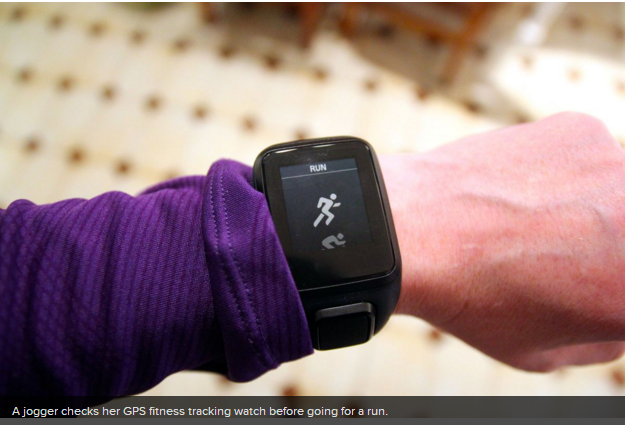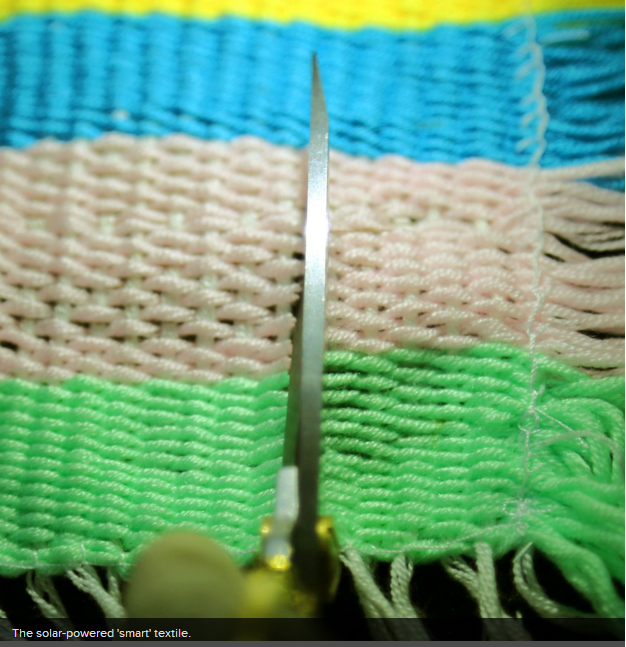New 'smart textiles' can produce and store solar energy

Why lug around a portable battery pack when you could generate that power with your own clothing?
That's the idea behind new "smart" fibers that can be tailored and woven like cotton — but also produce and store solar energy, like tiny clean power plants.
The early-stage textile device could eventually be used for on-the-go charging of smartphones and tablet computers, according to the Chinese researchers who developed the technology.
"We expect it can be a product for the everyday consumer in the future," two of the researchers, Wenjie Mai of Jinan University and Xing Fan of Chongqing University, told Mashable by email.
The researchers published their results Wednesday in ACS Nano, a scientific journal of the American Chemical Society.
Their invention adds to a growing field of research and projects that aims to make garments more than just fabrics that keep us warm, comfortable and presentable. Several shirts are already on the market promising to measure heart rates, track fitness activities and even measure babies' sleeping patterns.
That's not including the panoply of wristbands, buttons, headsets and sensors that can turn our bodies into walking data centers.

The solar-producing fibers wouldn't collect biometric information, but they could potentially address two big challenges facing modern society: How to keep all our devices fully charged, and how to satisfy our energy appetite without burning fossil fuels and emitting planet-warming greenhouse gases.
"Energy harvesting in general is significant," Paul Weiss, editor-in-chief of ACS Nano and the presidential chair at University of California, Los Angeles, said about the new textile device.
"Will clothing be a significant contributor to the power we acquire and use? We do not know yet," he told Mashable. "But as a field, we are exploring these ideas in addition to addressing the question of 'how' energy harvesting might work."
Solar threads
The textile device combines two main components: the dye-sensitized solar cell, which generates solar energy, and a fiber supercapacitor that can charge, store and discharge the electrical energy.
Woven together, the components form a cloth that can be cut, sewn and tailored to the designer's specifications — an important advantage over other types of smart textiles, which function more like one singular device and therefore are harder to shape into something you might actually wear.

The palm-size textile device can be fully charged to 1.2 volts by self-harvesting solar energy. An iPhone charger, by comparison, delivers 5 volts.
It's not yet shelf-ready
The material still has a long way to go before it can hit store shelves, as it must first prove to be cost-effective, energy efficient and durable, said Rigoberto Advincula, a professor of macromolecular science at Case Western Reserve University in Cleveland and a fellow of the American Chemical Society.
Still, "the elements are there to demonstrate that it actually works," he told Mashable.
He estimated that the first commercial product using this textile device could become available in about the next five years. Early demand will likely come from members of the military, emergency service crews or outdoorsmen, all of whom need lightweight power sources to move with them.

Mai and Fan, the co-authors of Wednesday's paper, said they had not yet used their textile device in an actual garment.
They said that while they made the device with a homemade machine, engineers would need to build a more complex operation to automatically fabricate the smart garments at a larger scale.
The device faces a handful of other barriers to reaching mass production.
The dye used in the solar cell component is "environmentally unfriendly," the two researchers said, because it contains volatile organic compounds that can be hazardous to human health and natural ecosystems if released. Newly developed dyes, however, could prove to be safer alternatives.
In addtion, the textile is not waterproof, so Mai and Fan cautioned against wearing it in the rain. But they said threads won't get overheated or explode, as they don't contain lithium-ion batteries.
"We still need some time to solve some technical problems," they added, but "it is possible for the fiber devices and textile devices to be fabricated at a large scale."
BY MARIA GALLUCCI fromhttps://mashable.com/
Are you ready to upgrade for your clothing brand?
Welcome to contact us by sending an e-mail tosales@eleheat.com.cn
Eleheat will provide you professional One-Stop Solution for Smart Clothing.
Make you Clothing more Functional and Comfortable.
